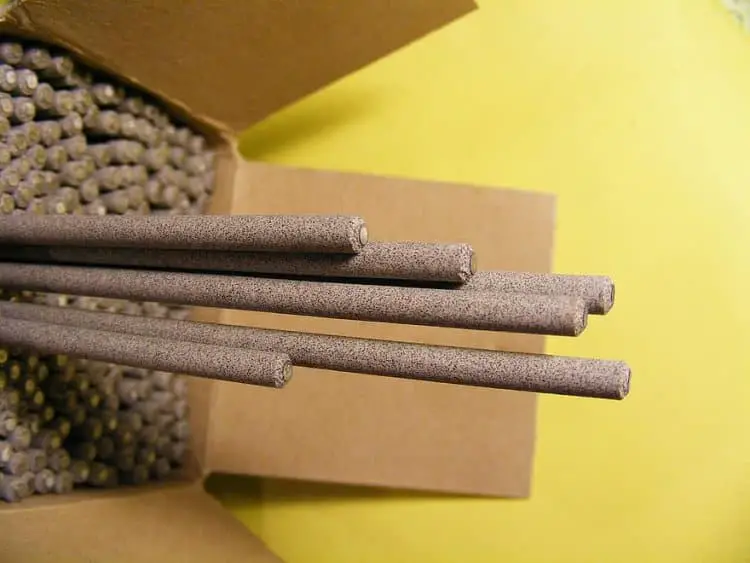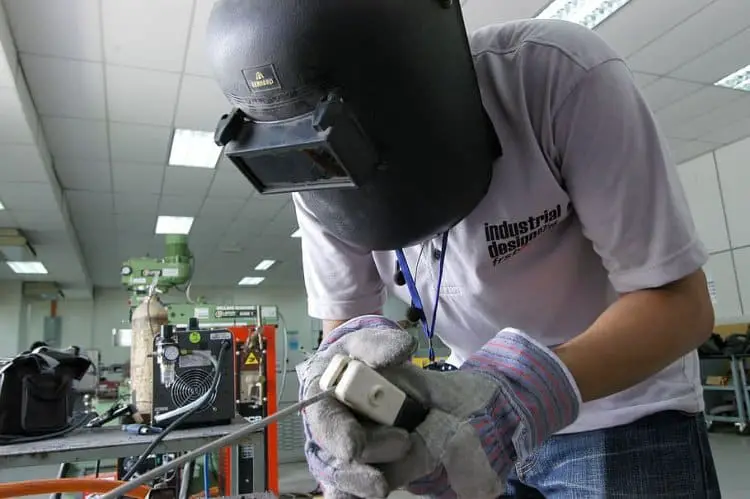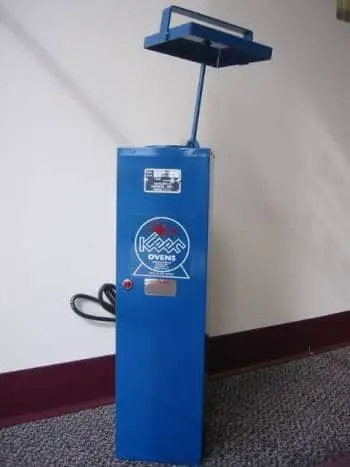This post contains affiliate links to products, services, or education. We may receive a commission for purchases made through links.
For welding to be efficient and enjoyable, you’ll need reliable welding rods. Apart from being reliable, you’ll also want to ensure that the rods are in good condition. Welding effectively and efficiently is essential.
So, can welding rods go bad? Welding rods can go bad depending on several environmental factors, mainly moisture and heat. Different types of welding rods have different conditions under which they go bad. 7018 welding rods, for example, are known to go bad quickly due to their extreme sensitivity to moisture.

There are a few other mostly environmental reasons why a welding rod can go bad. In this article, I’ll be explaining some of them, along with how expired welding rods affect your work and preventing welding rod damage.
How Do Welding Rods Go Bad?
For welding rods to perform optimally, you must use them in their dry state.
Exposing electrodes to humidity in the air makes them absorb moisture. The wetness that will result from this will cause them to dissolve.
Bear in mind that some welding rods appear to be more sensitive to moisture than others. Therefore, the moisture content that welding rods can withstand often depends on their type.
Generally, when electrodes get wet, the hydrogen gas that’s released as a result of H2O decomposition causes an increase in the ratio of deposited metal. This decomposition causes cracks on the rod.
When welding rods get wet from moisture, it causes the arc to become unstable. Slag also becomes more difficult to remove, and the appearance of the bead becomes rough, blowing holes and undercut form.
How Long Can You Store Welding Rods?

The storage time of welding rods entirely depends on the storage method you adopt.
Check out this article on how to store welding rods for a more in-depth read.
Note, however, that stick electrodes need to remain moisture-free for them to function well. Ensuring total dryness of the rod gives then the ability to deposit excellent welds.
Improper storage can cause you to run into issues like porosity and cracks on the rod.
Another tip that helps dramatically is for you to avoid changing temperatures because you want to achieve faster results.
Trying to dry rods that have been exposed to moisture will not help.
You can either continuously store your rod in a 250-degree cabinet, or 3-4 hours a day at a temperature of between 700 F to 800 F.
Attempting to dry welding rods in a shorter time than the above-listed temperatures can increase the chances of oxidation with certain alloys. This oxidation will, in turn, cause severe damage to the critical properties of the rod.
What Do You Do With Old Welding Rods?
If your electrodes have developed faults because of the amount of time that they’ve lasted, or due to their exposure to moisture; then it’s possible to get them working again.
There are specific methods that you can adopt to revive them back to their original capability.
For instance, you can choose to re-dry moisture-damaged rods to restore their ability to deposit the quality of weld you want.
Note that re-drying temperatures may differ across different electrodes, depending on factors like electrode type, present condition, and re-drying method adopted.
The temperatures at which you’ll re-dry electrodes are typically higher than the temperatures at which you would store them to remove excess moisture.
We recommend that you research the manufacturer’s specifications of each welding rod to see the proper storing and re-drying temperatures.
Irrespective of the type of electrode that you are re-drying or its present condition, you are expected to remove each electrode from the can and spread it out properly in the oven. This would help ensure that each electrode is dried at the right temperature.
Refusing to spread them out would eliminate the uniformity from the re-drying effects, considering that some would be exposed to the drying temperature more than the others.
Before applying heat to re-dry the rods, use a sealed container to dry them for up to ninety minutes. This helps to reduce potentiality or coating cracks.
Can You Dry Out Welding Rods?
Yes, you can dry out welding rods; however, you’ll need the right equipment to do it efficiently.

Check out this article about drying out welding rods for more information. It has a cool video if that works best for you.
When handled correctly, drying out can restore the ability of the welding rods to deposit quality welds.
Note that the temperature required for re-drying each electrode depends on the type and its condition.
If exposed to humid air for long, stick electrodes often pick up a level of moisture that will affect weld quality and operating characteristics.
If moisture begins to become a problem, then it is recommended that you store the welding rods from its open containers in a heated cabinet of between 40 to 50°C.
For proper re-drying of welding rods, adhere to the following. Whether the electrodes had direct contact with water or high humidity or have been exposed to air for less than a week, here are the drying temperatures for each type of rod:
- E8018, E9018, E10018, E11018: Drying temperature: 700 to 800°F (370 to 430°C)
- E7018, E7028: Drying temperature 650 to 750°F (340 to 400°C)
When Are Welding Rods Damaged Beyond Repair?
As stated earlier, this mainly depends on the type of welding rod and storage conditions. While some welding rods would get damaged as early as six months after purchase, some others last up to several years.
Storing your welding rods away from areas where they will contact moisture helps to increase their shelf life dramatically.
On the other hand, storing your welding rods inappropriately would make them more susceptible to developing issues sooner than others.
Many times, it is also dependent on the particular welding rod being referred to. Using a 7018- welding rod, for instance, might mean that you’ll experience a shorter shelf life as a result of the sensitivity of this type of rod to moisture.
7018-Welding Rods are designed to feature a coating that specifically allows for the factory to Bake the moisture out before packaging them.
It is this same coating that allows for easy absorption of moisture by the welding rod.
Signs That Show That A Bad Welding Rod Cannot be Saved
Despite the possibility of bringing back welding rods to their functional state after exposure to moisture, there are still cases where welding rods would no longer be salvageable.
One of the significant signs that would mean that your welding rod can no longer be salvaged is if it’s showing signs of softening of the flux.
At this point, getting the welding rod exposed to the level of heat that would remove moisture would not work for it.
However, if you are sure that moisture is the only issue, then using the baking method may possibly restore the rod to its usable state.
Conclusion
We’ve seen that welding rods can absolutely go bad since they are not designed to last forever.
However, the speed with which it gets bad would often depend on the type of welding rod that you are using, as well as the storage methods that you adopt.
Such tricks, like using heat to remove moisture, would often work for restoring the welding rods to functionality unless they are aged beyond repair.
If you want your welding rod to last longer, then you should always aim to dry-store the welding rods.

